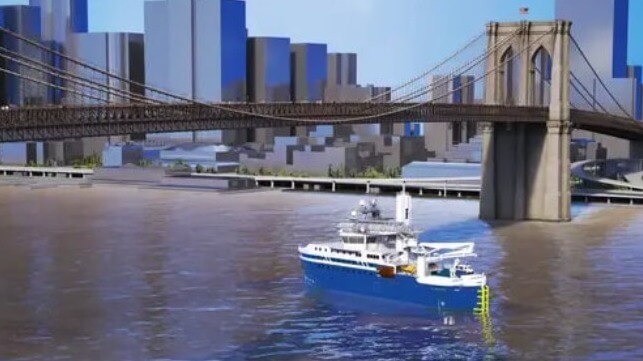Edison Chouest to Run Hybrid Battery SOV from Brooklyn for Empire Wind

Edison Chouest Offshore was selected to supply the first plug-in hybrid service operations vessel (SOV) with batter capability in the United States for the new Empire Wind offshore wind farm. The vessel is part of a long-term service operations vessel charter agreement with Empire Offshore Wind, a joint venture between Equinor and BP developing the wind farm located 15 to 30 miles southeast of Long Island.
The US-flagged vessel will be Jones Act compliant and have its home port at the new operations base that Empire Wind will develop at the South Brooklyn Marine Terminal in New York. The SOV will be constructed with components from Edison Chouest's U.S. supplier base.
The plug-in hybrid vessel will be the first in the U.S. capable of sailing on battery power for portions of the route. The SOV will sail into the port at the South Brooklyn Marine Terminal on battery power, recharge the battery using shore power, and sail out of New York Harbor. The hybrid vessel will be certified to “tier 4 emissions standards,” achieving the highest standard for marine applications.
“With the first of its kind, plug-in hybrid service operations vessel, Empire Wind will reduce potential emissions from our operations in the New York City area,” said Teddy Muhlfelder, Vice President, Empire Wind and Beacon Wind, Equinor. “This is another critical step forward in the development of the offshore wind industry while helping achieve critical state and federal climate goals.”
The charter agreement has a fixed period of 10 years, with commencement in the mid-2020s. The vessel will accommodate up to 60 wind turbine technicians and will be utilized for the operations and maintenance of the Empire Wind 1 and Empire Wind 2 offshore wind farms.
Empire Wind, which is being developed by Equinor and BP, encompasses 80,000 acres, with water depths of between approximately 75 and 135 feet. The two phases of the project call for a total installed capacity of more than 2 GW. The companies received the lease in 2017 and permitting is currently underway. They expect construction of components could begin in 2023 with the wind farms expected to produce their first power in the mid-2020s.
